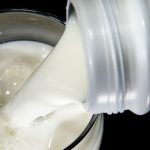
Speaking on a newly-released RaboResearch podcast, Mr Harvey said there had been strong consumer demand for liquid or ‘white’ milk in China during 2020, despite the impact of the COVID-19 pandemic.
This would continue to grow.
“Chinese demand for dairy has plenty of space to grow long term – largely attributable to long-standing key drivers such as low per-capita consumption and strong private and public investment into the sector due to the health benefits of dairy products,” he said.
“And with many of the big dairy companies in China now starting to provide their 2020 full-year results, what’s really interesting is we’re seeing that many are reporting rapid revenue growth for ‘white milk’.
“Companies like Yili and Mengnui, for example, have reported double-digit growth in ultra-high-temperature (UHT) long-life milk sales with the companies putting this down to the health and wellness benefits consumers are seeing.”
Mr Harvey said liquid milk had been a long-standing growth market for a lot of dairy exporters around the world in the past decade, with exporters from Australia, New Zealand and the European Union the major beneficiaries.
“Liquid milk imports into China notched up a couple of major milestones in 2020, with September last year the first time more than 100,000 tonnes of liquid milk have been imported in a calendar month,” he said.
“Last year was also the first time that China has imported more than one million tonnes of liquid milk in a calendar year.
“When you compare this to 2008 – when only 8000 tonnes of liquid milk were imported into China – it does give you an indication of how strong growth has been, with this increase representing a compound annual growth rate (CAGR) over this period of around 50 per cent.”
EU market share growth
Mr Harvey said of the big three key liquid milk exporters into China (New Zealand, the EU and Australia), the EU had recorded the biggest increase in export volumes in 2020, while Australian volumes had remained flat.
“Chinese liquid milk import volumes from the EU-28 rose by 26pc last year and in particular there was really strong growth out of Germany – the largest exporter in the EU bloc – which increased volumes by around 31pc,” he said.
“New Zealand liquid milk volumes into China also grew strongly and were up by 9pc, although Australian volumes were flat.”
Mr Harvey said the Australian volumes were a “reflection of market dynamics, not trade tensions”, with Australian liquid milk exports to China in 2020 impacted by factors including low production and competing export markets.
He said the strong growth in liquid milk exports out the EU was primarily down to changes in local EU market dynamics.
“In the EU, there have been a number of lockdowns and other measures related to the pandemic, which have reduced consumption within the EU bloc,” he said.
“Several of the EU’s major markets in the North Africa region have also had significant COVID-19 issues and these, combined with political and civil disruption in this region, have impacted the flow of exports into these markets.
“And this has resulted in the EU directing an increased volume of liquid milk into China and picking up share in this market.”
Short-term head winds
While China’s demand for liquid milk imports was expected to continue its growth path in the long term, Mr Harvey said, there were some immediate headwinds for Chinese consumption growth.
“Several of the major Chinese dairy brands are talking about margin pressure in 2021, with this coming from two main sources,” he said.
“Firstly, the cost of local milk in China is at near-record levels largely driven by a big lift in the cost of feed for Chinese corporate farms.
“Secondly, the rise in liquid-milk consumption in recent times has partially been at the expense of other higher-margin dairy products, such as drinking yoghurts and flavoured milk.
“To combat the resulting margin squeeze, a number of Chinese dairy brands have increased their retail price for milk and this could have a negative impact on overall liquid milk purchases for some consumers.”
Mr Harvey said regional COVID-19 flare-ups in the country also shaped as a possible threat to liquid milk consumption growth.
























